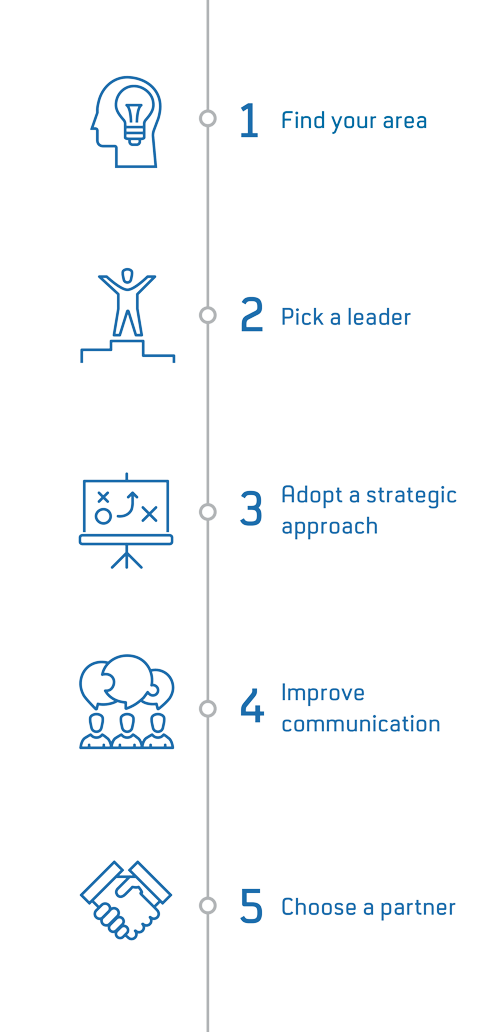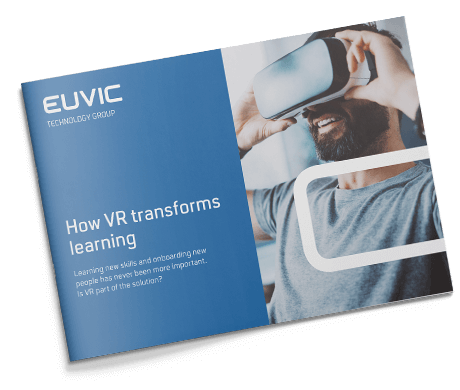
All you need to know if you want to introduce VR in your organization EN
15 January 2019
VR technology is becoming an important component of the business strategy for companies operating in various market sectors. According to research company Altimeter value of the AR and VR markets will be growing linearly – from $18 billion in 2018 to $215 billion in 2021. That’s a staggering result!
At Euvic, we have been working with VR for over 5 years, successfully implementing VR-solutions in a wide range of industries, from public transportation to fire fighting. To help you understand if VR will play a part in your industry as well, we have put together an easy to follow project plan based on our experience of many years of VR-projects.

1. Find your area
VR technology offers virtually unlimited possibilities, but for many reasons, such as costs and effectiveness of implementation, it is necessary to approach the challenge strategically: choose the area in your industry that will work well, for example in employee training or product enhancement.
The fundamental question that you have to ask yourself concerns the purpose of the implementation and the expected benefits. In the long term, VR might bring savings and optimize the processes covered by the project, e.g. by allowing the training of employees without the need to use expensive products and tools (Arriva case). In the short term, however, it may mean considerable investment. Therefore, the decision about what area to invest in has to be preceded by careful calculations. Consider how will technological support transform your business. Then choose the process to be implemented, complemented, altered or moved to VR.
Think about the payment model for the service. For example, Euvic enables settlement in the form of monthly subscriptions. Thanks to this solution you do not bear the entire cost of creating a VR platform and you pay for the actual number of its users.
2. Pick a leader
As any process of changes, VR implementation requires an efficient team and an enthusiastic manager. The leader will pass knowledge down the organization, support others and coordinate the whole project. A VR project leader should have three characteristics:
- be a business champion, who will help the company understand the business value that is being created and who needs to establish partner-like relations with the chosen department for the implementation of the VR-project
- understand the business and be able to predict the impact of VR implementation on business objectives and the way the company operates – both in the short and long term;
- have leadership skills. Michael Mankins, author of the famous book “Time, Talent, Energy” in an interview with Fast Company, recalls the example of Dell, an organization where sales teams with inspiring leaders have on average 6% better sales results than other teams. In Dell’s case, that’s a huge amount (an additional $1 billion a year), but these benefits apply proportionally to every company, regardless of its size or market sector it operates in.
3. Adopt a strategic approach
Entering a new stage of technological development by a company requires serious planning. Plan what you want to achieve and in what time perspective. Think about how the team’s way of working will change during the implementation process and as a result of it. Already now think about how to allocate tasks and competences to make sure you are ready for a new workflow in the company.
4. Improve communication
Any change normally encounters resistance from employees – every change is difficult! The leader’s role is of key importance here, as he is the one who should inspire and motivate his colleagues. Not only a dialogue within the organization, especially between the leader and the team, but also relations and communication between the organization and the end customer (for example when Audi launched a VR-tool for its re-sellers) are important. It is particularly important that the recipient does not suffer from the implemented change, but on the contrary – he should be its conscious beneficiary. At an early stage of implementation (e.g. project piloting), as a part of the improvement of communication standards, it is necessary to provide substantive support and information to both of the parties. In other words: inform and explain why a VR project is important and what benefits you expect, also from the point of view of your interlocutor.
5. Choose a partner
Make sure you partner up with an external expert. Find a partner that will enable you to innovate! In addition, you will find companies for which you will effectively outsource planning and implementation of a VR project. They have the know-how and experience that your company may lack and might give you a ready solution that will cost less than if you wanted to do the project on your own. It’s of key importance to customize the tool to the company’s needs and capabilities (also external factors – business surrounding).

Download our newest whitepaper “How VR transforms learning”
At Euvic, we help our customers innovate by combining our customers’ understanding of their business and business processes and our understanding of the latest technology. If you would like to take advantage of our experience, in VR or in other subjects, or if you have any questions regarding the implementation of virtual reality, please contact us.
back